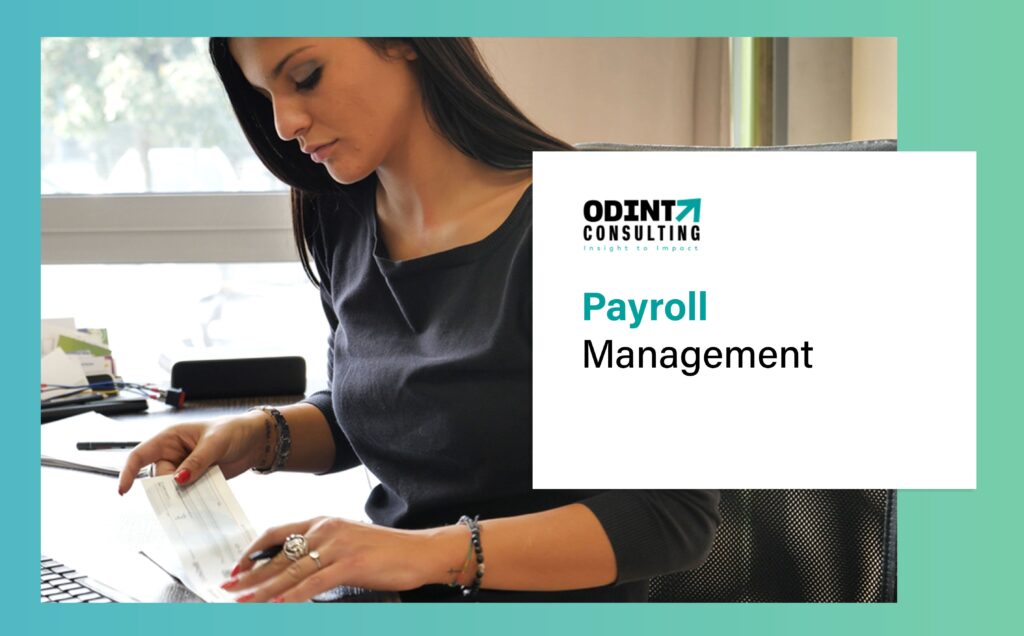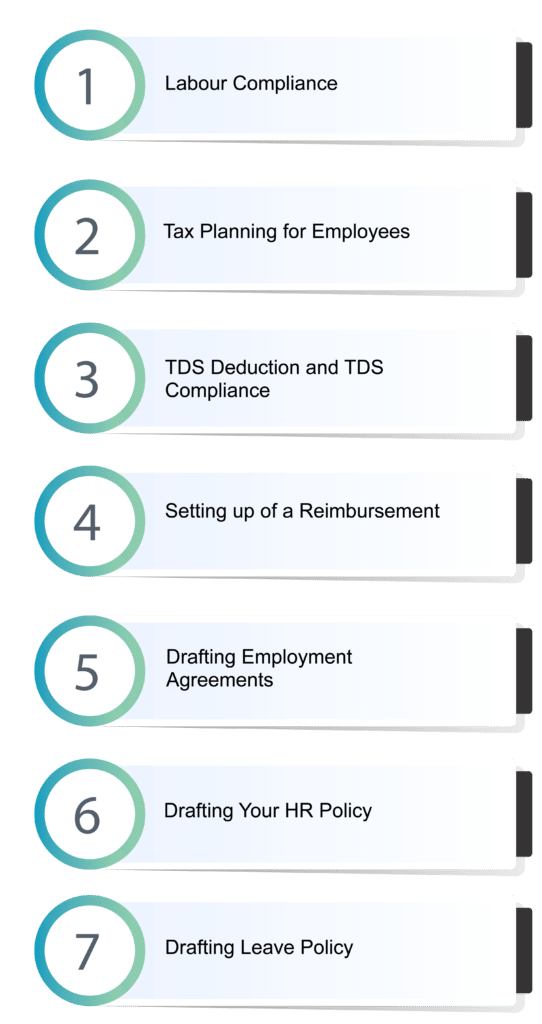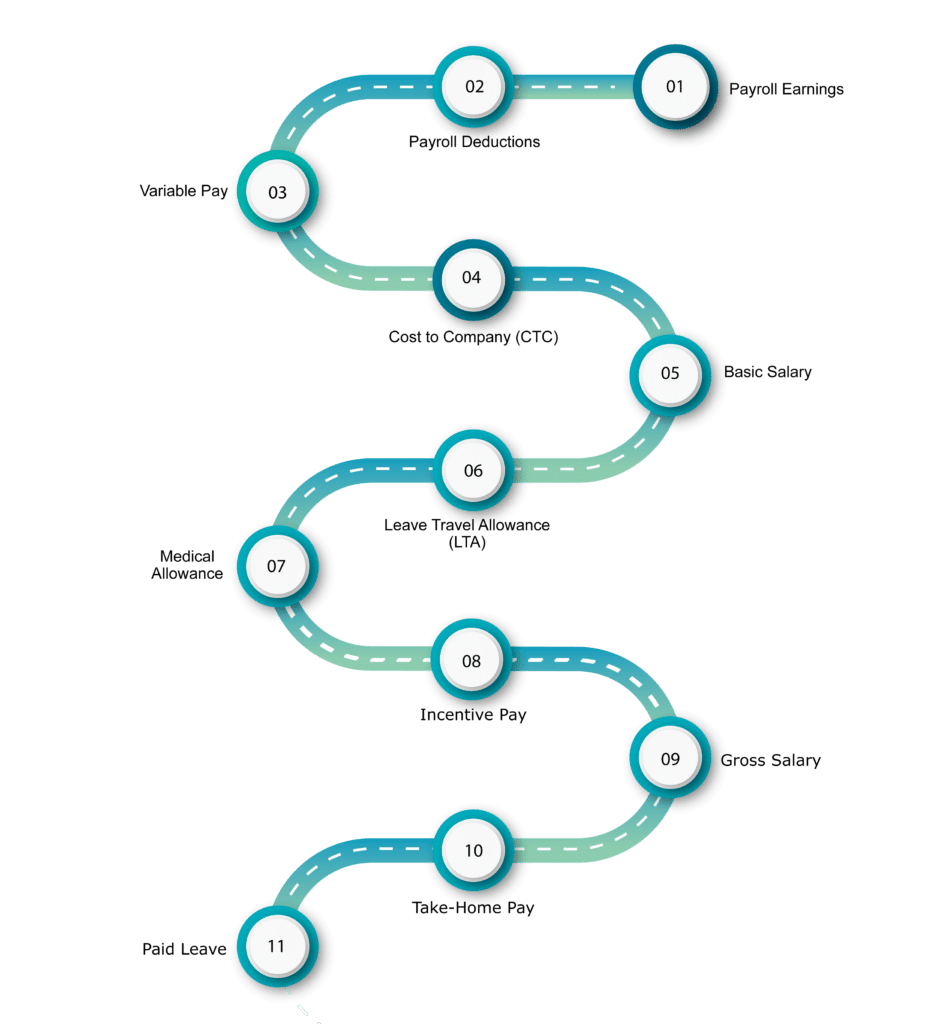
Overview: Payroll Management
Payroll Management involves the procedure to keep the track of an employee’s earnings net pay, wages and tax deductions, incentive as well as other statutory obligations like the PF (Provident Fund) and ESI (Employees’ State Insurance).
A successful payroll management system will ensure that employees get paid in time, which speaks positively about financial stability and reduces the risk of legal consequences.
In turn, the morale of the business remains high! Any business, no matter how small or medium-sized is required to have a payroll administration system.
A reliable system for payroll that is compliant with both the labor and payroll standards is necessary for a smooth payroll management process. Below down we’ve brought into account the entire payroll management system.
Advantages Of Payroll Management System
If your employees think they are in a position of uncertainty and aren’t being paid in time, they could be tempted to look for employment in other places.
Payroll Management systems can handle any last-minute problems or mistakes made manually, ensuring that the morale of your employees is maintained at a high level.
Lower tax bills:
The Payroll management of all of the employee records isn’t easy and handling these records could be a hassle. Add compliance issues with the other issues and you could be liable for penalties if you’re not cautious about this.
Simple tax filing and reporting:
Payroll management software helps to prevent tax evasion and could result in fines for the employees. It also manages all aspects of compliance for the business and legal requirements which makes tax filing easy.
It is beneficial to startups with new owners:
As a newly-founded business owner, you already have numerous things to be doing. Instead of adding payroll administration to your list of duties, you can control your company’s finances by using an established management system.
Time-saving and economical:
Payroll management system software is usually developed to integrate with an accounting system that is already in use. This is a time-saving and cost-saving solution for businesses when they calculate large amounts of data.
Instead of outsourcing your payroll management, having it in-house can save you lots of dollars. Additionally, you’ll have greater control over your money.
Checklist for an Effective E-Payroll System
Company Documents
- Certificate of Registration
- Electronic Challan cum Return (ECR) document
- Company GST and TIN.
Payment Schedule
- Flexible and fixed time frame
- Weekly
- Bi-weekly
- Semi-monthly and
- Payroll schedules for the month.
Classify Employees
- Sort employees according to
- Contractors
- Freelancers
- Permanent employees
- Interns and
- Make payments by the schedule.
Terms of Compensation
- To keep track of
- Hours of work
- Office hours
- Overtime, etc.
Designing CTC Structure:

CTC (also known as the cost to a company refers to the total amount of salary that the company provides to employees whether directly or through indirect means.
CTC is comprised of basic pay allowances, reimbursements and allowances bonuses, gratuities as well as annual variable pay , etc. It could be defined by CTC as Gross Salary plus PF and Gratuity.
Labor Compliance:
Laws governing labor in India regulate employees, employers as well as trade unions, with the primary focus being on the protection of employees’ rights. All organizations operating in India must comply with various statutory requirements that are imposed by various acts of the labor law.
Employers are all obliged to file EPF returns each month before the 25th.In the event of non-compliance, companies could be fined or their staff could be detained for 3 years or more.
Tax Planning for Employees:
The planning of tax payments is vital for salaried people because it saves taxes. Based on your business entity as well as the designations of employees, and other salary-related components Our taxation experts can give you the best advice about tax savings that are in line with the latest changes to tax laws and regulations.
TDS Deduction and TDS Compliance:
In accordance with the Income Tax Act, every paying individual or business makes payments such as commissions, salary, or interest. is required to deduct a certain percentage before paying the entire amount. Tax is taken at source or TDS.
Setting up of a Reimbursement:
Reimbursement refers to the amount that is paid to cover the expenses. Certain companies pay employees back for expenses for travel, medical allowances as well as entertainment and food expenses, and so on.
From reporting claims and reimbursements. Odint consultancy assistance includes your company’s policies on reimbursement.
If you wish to make reimbursement a component of the salary of your employees and we can define the structure of the salary in a manner that ensures the tax compliance requirements are met (online pay slips generator).
Drafting Employment Agreements:
A contract of employment outlines the terms of employment as well as the rights, obligations, and responsibilities of each party during the term of employment.
The agreement assists employees to gain a clear understanding of their duties and expectations of the business. It also serves as proof in case of a disagreement or miscommunication between the two parties.
Drafting Your HR Policy:
Each company operates by following specific guidelines that are set by top management and the HR department.
These guidelines could comprise codes of conduct of employees as well as their responsibilities and duties as well as the obligations of the company towards employees, discrimination policies that are deemed in violation of the company’s policies employees, benefits for employees as well as disciplinary actions.
Our experts at Odint will provide you with the most effective policies that will benefit your industry, Based on our extensive knowledge and experience gained from working in a myriad of different sectors and industries.
Drafting Leave Policy:
The policies on leave are enforced by the state legislature’s Shops and Establishments Act and Factories Act as applicable. In general, all state laws contain a common law provision in which they offer seven holidays on holidays and national days.
So, it’s up to your discretion to determine the number of days off and our lawyers will assist to better frame the issue.
Planning Increments and Appraisals for Employees:
Appraisals for performance and raises in salary encourage your employees to perform at the highest level of their ability. Appraisals offer thorough, honest feedback regarding their strengths as well as the scope for improvement. We can help you with formulating the best way to assign appraisals and increments to employees.
Payroll Management Glossary

Payroll Earnings
Payroll earnings are the amount that is paid to employees in the form of different pay components, such as basic pay, rent for the house allocation, incentives for sales, and so on.
Payroll Deductions
Payroll deductions are the amount taken from the salary of an employee (or earned) by the employer to fund items like government taxes and employee benefit programs.
Variable Pay
Variable pay, commonly referred to as risk or performance pays one kind of remuneration, which is different from fixed pay. It has to be earned each time. Variable pay isn’t guaranteed and is only paid when the teams and employees of the company can meet certain quantitative or qualitative objectives.
Cost to Company (CTC)
Cost to the company is the sum of non-monetary and monetary benefits that an employer pays to employees during a year.
Basic Salary
Basic salary, also known as the “basic pay” is the main and most important element in your pay structure. However, many other components of your salary like HRA, Provident Fund, Gratuity, ESIC, etc. are calculated in % of your basic pay. e.g. The Provident Fund at 12.5% of basic pay is taken out of salary.
Leave Travel Allowance (LTA)
The leave travel allowance, also known as a concession for travel, is a component of the salary which companies add to the CTC of employees to assist them in reducing taxes on the money spent traveling within India during their off from work.
Medical Allowance
The medical allowance can be described as a predetermined allowance provided by an employer to an employee in the form of a monthly wage and employees do not have to present any documentation to receive the medical allowance.
Incentive Pay
Incentive pay refers to the additional pay given to employees in exchange for reaching pre-defined goals or goals and is directly tied to the individual’s performance at work.
Gross Salary
A gross wage is an amount a business gives to employees, before any deductions.
Take-Home Pay
In-hand pay, also known as take-home pay or net pay is the amount of money you receive in the bank account (or by cash or cheque).
Paid Leave
Paid leave is the kind of work-related leave during which you earn your regular pay.
Conclusion
Payroll management is the method of keeping the track of employees’ wages, earnings, net pay incentives, tax deductions as well as other statutory obligations like PF and ESI.
So, if you still have any queries related to the Payroll management system, we are ODINT Consultancy. We’re we are here to assist you at each step of your way.
FAQ’s
The payroll management process is divided into three steps: pre-payroll, actual payroll, and post-payroll.
The payroll management, accounting tax, and other financial responsibilities can be complicated and time-consuming, particularly if your company is a startup.
The accounting department is responsible for the payment, and it is subject to approval from the director of the agency or the representative.
The payroll management system, accounting taxes, as well as other financial obligations are complicated and time-consuming when your business is a new venture.
Statutory deductions include IT (income tax), EPF (employee provident fund), TDS (tax deducted at source), and ESI (Employees’ State Insurance) which are deducted by the annual salary of an individual as well as the legislation of the state.
